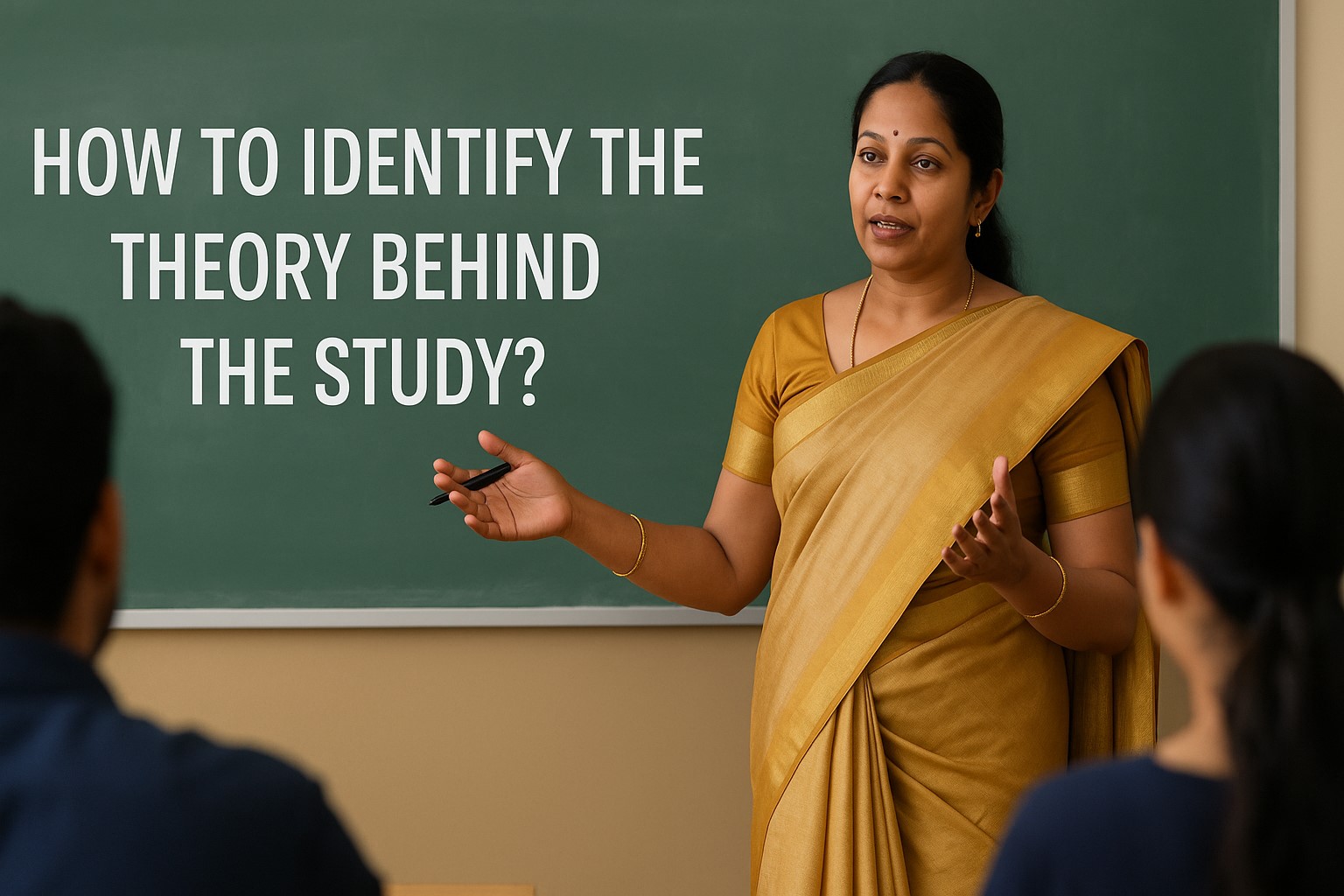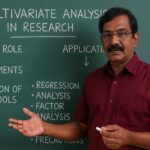Introduction
Every research study stands on a foundation that is often invisible yet essential — the theoretical framework that explains why a phenomenon occurs and how different variables are interconnected. This foundation, commonly called the “theory behind the study,” forms the intellectual backbone of systematic inquiry. It transforms an abstract idea into a structured investigation by offering a logical, evidence-based lens through which a researcher examines the world.
Without theory, research becomes a collection of unrelated facts. With theory, it becomes a coherent narrative about relationships, causes, and outcomes. Across disciplines such as business, psychology, education, technology, and environmental science, the theory behind a study defines its direction, interpretive strength, and scientific credibility.
What Does “Theory Behind the Study” Mean?
A theory is a well-established explanation of why things happen. It organizes knowledge, predicts outcomes, and guides inquiry. When researchers refer to the theory behind the study, they mean the set of interrelated ideas or models that explain and justify the relationships between variables.
For instance, in a study on employee motivation, researchers might rely on Maslow’s Hierarchy of Needs, which explains that motivation arises from the desire to fulfil successive levels of human needs — from basic physiological to self-actualization. The theory provides context and meaning to observed data, helping explain why motivated employees perform better.
In essence, theory serves as a compass which guides the researcher from assumptions to interpretation.
Why Theory Matters in Research
The role of theory in research is threefold:
Explanation: It helps clarify why certain patterns or relationships exist.
Prediction: It enables the forecasting of outcomes under specific conditions.
Application: It provides a basis for solving real-world problems.
A strong theoretical foundation ensures that research moves beyond surface-level description to deliver analytical insight, thereby connecting data with deeper meaning.
Difference Between Theory and Model
Although the terms theory and model are often used interchangeably, they serve distinct yet complementary roles in academic research. A theory provides a broad, abstract explanation of why a phenomenon occurs, supported by empirical and logical reasoning. In contrast, a model is a simplified or structured representation that demonstrates how the relationships described in a theory function in practice. Models often translate theoretical principles into measurable or testable forms.
A good illustration of this distinction can be found in behavioural and technology research. The Theory of Reasoned Action (TRA), developed by Fishbein and Ajzen (1975), explains how beliefs shape attitudes, intentions, and behaviours. Building upon this, Fred Davis (1986) developed the Technology Acceptance Model (TAM) — which is a model, not a theory. TAM applies the conceptual principles of TRA specifically to technology adoption and use. It introduces two measurable constructs — Perceived Usefulness (PU) and Perceived Ease of Use (PEOU) — to explain users’ acceptance of technology. In this context, TRA provides the theoretical foundation, while TAM operationalizes and applies the theory within a specific domain.
Similarly, in business studies, Expectancy–Disconfirmation Theory (EDT) serves as a theoretical explanation for customer satisfaction, while the Customer Satisfaction Model visually represents how expectations, perceived performance, and satisfaction interact. Simply put, a theory explains, while a model demonstrates or applies.
| ASPECT | THEORY | MODEL |
| Purpose | Explains why a phenomenon occurs | Demonstrates how a phenomenon works |
| Nature | Conceptual, abstract, and explanatory | Practical, simplified, and descriptive |
| Scope | Broad and generalizable | Specific and operational |
| Example (Behavioral Science) | Theory of Reasoned Action (TRA) | Technology Acceptance Model (TAM) |
| Example (Business) | Expectancy–Disconfirmation Theory | Customer Satisfaction Model |
| Role in Research | Provides foundation for understanding and hypothesis formulation | Offers structure for empirical testing and illustration |
In summary, a theory establishes the intellectual foundation of a study, while a model operationalizes or visualizes that foundation for empirical testing.
How to identify the right Theory for your Research
Selecting an appropriate theory begins with a clear understanding of the research problem and objectives. The researcher must first determine whether the study explores relationships such as cause and effect, attitude and behavior, or perception and intention. Once the relationships are defined, the next step is to review prior studies in similar contexts. Examining the existing literature reveals which theories other researchers have employed to explain comparable phenomena.
For example, studies on technology adoption frequently draw upon the Technology Acceptance Model (TAM) or Diffusion of Innovation Theory (Rogers, 2003). In contrast, research on consumer satisfaction often utilizes Expectancy–Disconfirmation Theory, while behavioural studies concerning environmental actions commonly apply the Theory of Planned Behaviour (TPB). Beyond identifying potential frameworks, researchers should also evaluate how well each theory aligns with their study variables and assumptions. Key questions to consider include:
- Does this theory explain the relationship between my independent and dependent variables?
- Can it predict the expected outcomes in my context?
- Is it flexible enough to adapt to new conditions or mixed-method studies?
If no single theory fits perfectly, researchers may combine multiple frameworks to form a hybrid theoretical base. For example, studies on digital education might integrate Constructivist Learning Theory (for cognitive development) and Self-Determination Theory (for motivation). The best theory is one that offers conceptual alignment, testability, and interpretive clarity.
Sequence of Discovery: Problem to Theory or Theory to Problem?
Problem to Theory
A common question among researchers is whether to begin with the research problem and then search for a suitable theory, or to start from an existing theory and identify a problem it can explain or extend. In most applied and empirical research, the process generally follows a Problem → Theory sequence. The researcher first identifies a real-world issue or observable phenomenon and then explores relevant theories that can explain, frame, or predict that occurrence. For instance, if an organization faces high employee burnout, the researcher may turn to the Job Demands–Resources (JD–R) Theory to explain how imbalanced demands and insufficient resources contribute to stress and disengagement. This approach ensures that the study remains practically relevant while being conceptually grounded in established theory.
Problem to Theory – Process:
- Identify the research problem.
- Define key variables or relationships.
- Review existing literature.
- Identify a relevant theory that logically explains those relationships.
- Use the theory to build your conceptual framework and hypotheses.
This approach is ideal when your study aims to solve practical problems, test relationships, or apply theory to a specific context (e.g., HR, marketing, finance, education).
In short: You start with the problem, then identify the theory that explains it.
Theory to Problem
Conversely, in more conceptual or theoretical studies, researchers may adopt a Theory → Problem approach. Here, the goal is to test, refine, or extend an existing theory by applying it to a new context or variable. For example, a scholar might use the Theory of Planned Behaviour (TPB) to explore how it predicts sustainable investment intentions, a context not originally covered by the theory. In this way, theory-driven research expands the boundaries of academic understanding, while problem-driven research strengthens theory’s applicability to real-life situations. Both routes are valid; what matters most is ensuring that the research problem, variables, and theoretical framework are logically aligned, forming a coherent and credible foundation for analysis.
Theory to Problem – Process:
- Choose an existing theory that interests you.
- Identify a gap — a context, variable, etc. that the theory hasn’t fully explained.
- Formulate your research problem around testing or extending that theory.
This is common in theoretical model development, psychological theory testing, and emerging technology studies.
In short: You start with the theory, then find a problem to apply or test it.
Theories in Action: Real-Life Examples Across Disciplines
1. Business and Management: Expectancy–Disconfirmation Theory (EDT)
In marketing and service research, the Expectancy–Disconfirmation Theory explains customer satisfaction as the result of comparing expected performance with actual experience. For instance, when customers buy a smartphone, they expect certain levels of battery life and camera quality. If the product exceeds these expectations, positive disconfirmation occurs, leading to satisfaction and brand loyalty. This theory is widely used in service quality and consumer behaviour studies.
2. Psychology: Social Learning Theory (SLT)
In psychology, Albert Bandura’s Social Learning Theory explains how people learn through observation, imitation, and reinforcement. For example, children who observe aggression in media often replicate it, while employees model the behaviours of their superiors at work. The theory has guided research in education, behavioural modification, and social influence, emphasizing the role of environmental and social factors in learning.
3. Education: Constructivist Learning Theory
Constructivist Learning Theory, developed by Jean Piaget and Lev Vygotsky, holds that learners actively construct knowledge through experience and reflection. Modern educational practices such as project-based learning, collaborative classrooms, and flipped learning models are all rooted in this theory. It underpins research into student engagement, learning outcomes, and curriculum innovation.
4. Technology and Innovation: Diffusion of Innovation Theory
Proposed by Everett Rogers (1962), this theory explains how innovations spread through a population. It classifies adopters as innovators, early adopters, early majority, late majority, and laggards. For instance, early acceptance of electric vehicles was limited to innovators and early adopters due to cost and infrastructure, but wider diffusion occurred as technology matured. This framework is widely applied in digital transformation, innovation management, and green technology research.
5. Environmental Studies: Theory of Planned Behaviour (TPB)
In sustainability research, Icek Ajzen’s Theory of Planned Behaviour explains how attitudes, subjective norms, and perceived behavioural control influence an individual’s intention to act. For example, while people may have a positive attitude toward recycling, if they perceive limited access to facilities, their actual behaviour may not align with intention. TPB has been fundamental in shaping environmental policy and behavioural change initiatives.
Integrating Theory and Practice
Theories are more than academic constructs — they serve as bridges between conceptual reasoning and real-world application. They allow researchers to interpret findings, generate practical solutions, and contribute to the refinement of existing knowledge. Modern research often extends traditional theories to new contexts. For example:
- In digital marketing, classical satisfaction theories now integrate AI-based personalization.
- In education, constructivist learning is enhanced by virtual and online environments.
- In organizational behaviour, motivation theories are revisited for remote and hybrid workforces.
This adaptability demonstrates that theories and models evolve continually to address emerging challenges and technologies.
Conclusion
The theory behind the study is not merely an academic requirement, it is the soul of scholarly research. It gives meaning to data, provides direction to analysis, and ensures the study’s findings contribute to cumulative knowledge.
A research project without theory is like a journey without a map: it may reach a destination, but with no clarity about how or why it got there. Grounding research in an appropriate theory ensures that discoveries are not only contextually meaningful but also intellectually coherent and scientifically valid. In the end, theory transforms information into understanding, making research not just an act of inquiry, but a step forward in human knowledge.









Leave a Reply